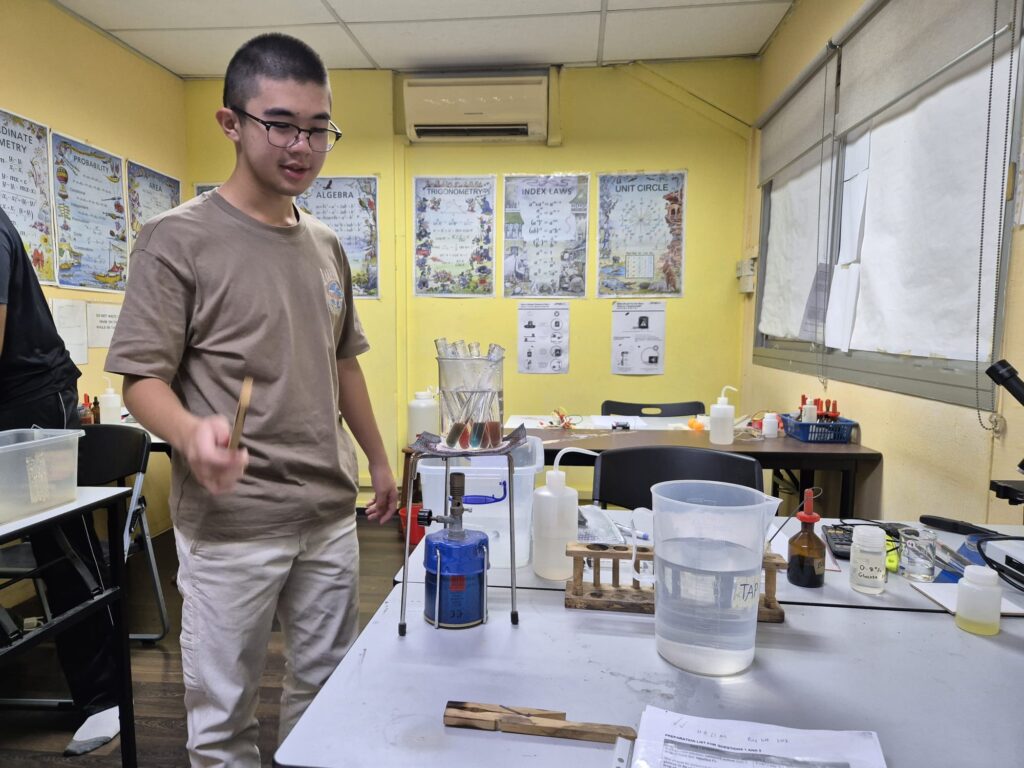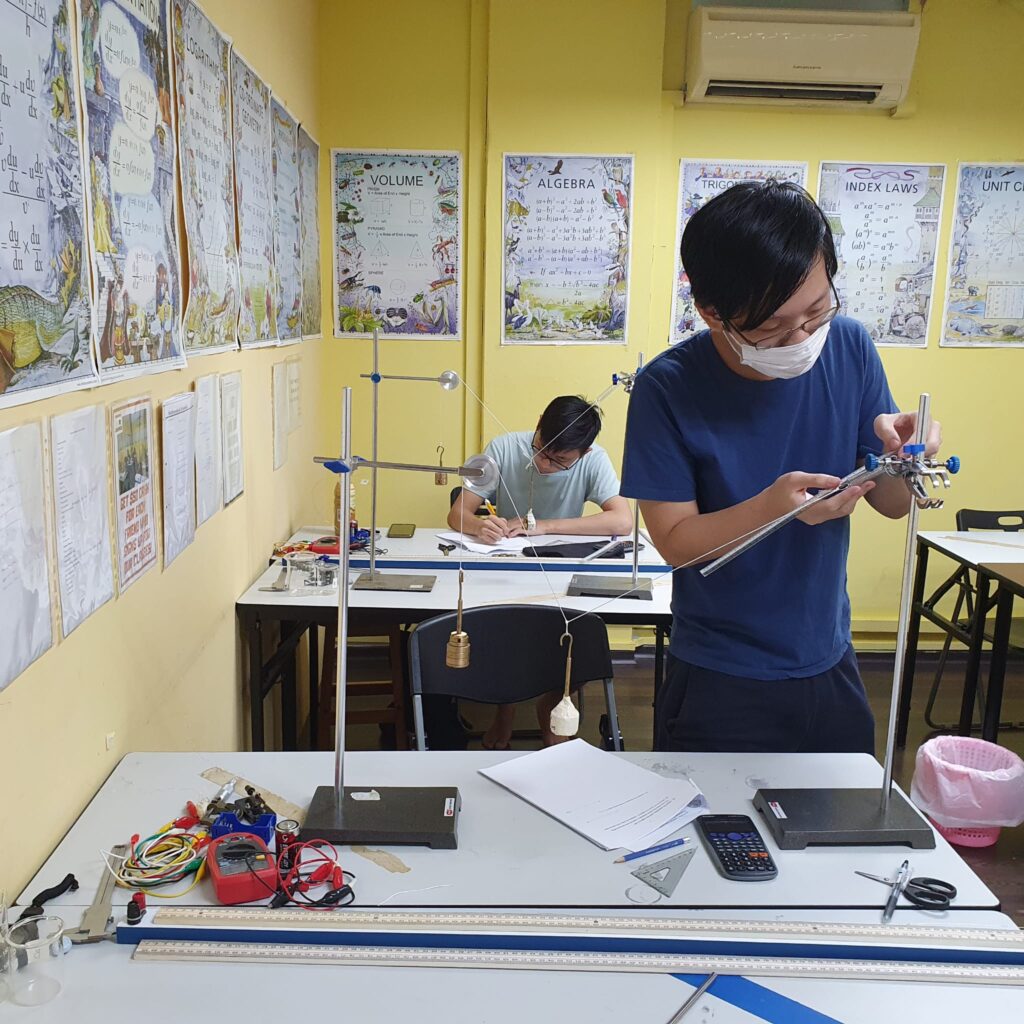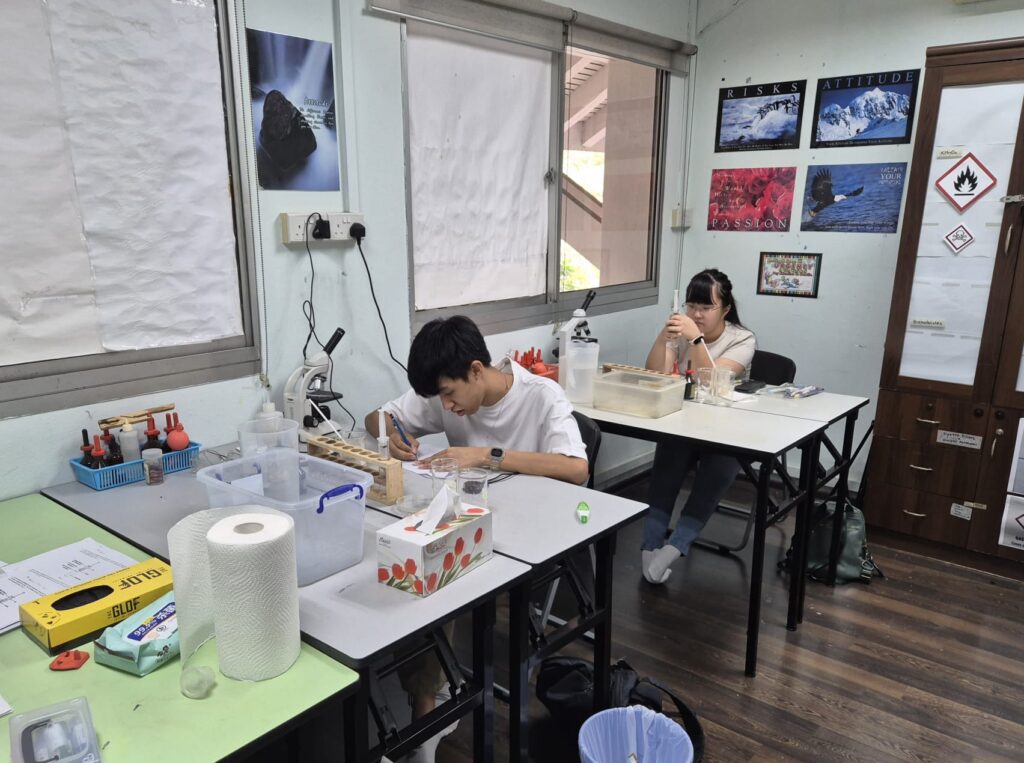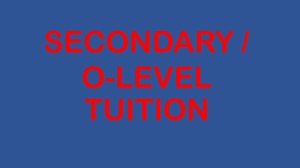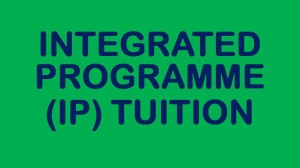Attention 2026 A-Level Students!
Did you know there are updates to the A-Level Science syllabus?
Curious about the changes?
Don’t worry—Singapore Learner’s tutors have got you covered!
Changes to ALL Sciences:
- The marks for ALL SCIENCES Practical has been reduced from 55 marks to 50 marks, while the weightage remains at 20 %.
- Additionally, the Planning (P) component reduced from 5 % to 4 %, while other components (Manipulation, measurement and observation (MMO), Presentation of data and observations (PDO) and Analysis, conclusions and evaluation (ACE)) increased from 15 % to 16 %. This suggests that students should focus less on the planning component and more on the other components!
Looking for PRACTICALS, CRASH COURSES AND MOCK EXAMS (Jun, Sep, Oct)?
H2 SCIENCES PRACTICAL TRAINING
TO REGISTER, CALL 65694897 or Whatsapp or Message our staff at 88765498.
- As for the assessment objectives, knowledge with understanding is now more worth at 36 % (from 32 %) than handling, applying and evaluating at 44 % (from 48 %). (In layman terms, this means that the questions are set slightly MORE towards remembering and understanding the content THAN application questions).
Changes to H2 Physics ☢️:
- Syllabus code changes from 9749 to 9478.
- [TO BE UPDATED]
Looking for H2 Physics Tuition?
H2 PHYSICS TUITION
WHATSAPP 88765498 (Admin).
Changes to H2 Chemistry🧪:
- Syllabus code changes from 9729 to 9476.
- For Paper 3 (Structured Questions), the total marks has now decreased from 80 marks to 75 marks, with from Section A (Long Structured Question) decreased from 60 marks to 55 marks. Weightage of Paper 3 (35 %) and marks from Section B (20 marks) remains.
- Clearer wordings in the learning outcomes (L.O), which includes
- For discussion of effects on the entropy of a chemical system, “mixing of particles” is NO LONGER REQUIRED.
- Instead of “describing enzymes as biological catalysts which may have specific activity” and “explaining the relationship between substrate concentration and the rate of an enzyme-catalysed reaction in biochemical systems“, candidates are now require to “describe enzymes as protein molecules that act as biological catalysts with high specificity (in the reactions that they catalyse and in their choice of substrates as exemplified by the lock-and-key model), temperature sensitivity and pH sensitivity [knowledge of the levels of structure of proteins and the details of the denaturation process are not required]. (I can forsee the H2 Biology Students smiling…)
- Instead of using buffer solutions (CO32–/HCO3–) to explain controlling pH in blood, it used to explain maintaining pH in oceans, and how the rapid increase in atmospheric carbon dioxide gas contributed to ocean acidification.
- Inclusion of reagents and conditions in the L.Os.
- With inclusion to recognise the effect of chlorofluoroalkanes (CFCs) on the ozone layer, candidates are also required to recognise their proposed replacements, hydrofluoroalkanes (HFCs) and hydrochlorofluoroalkanes (HCFCs), having significant environmental impact too.
- Proteins are no longer part of the nitrogen compounds chapter, but in the polymer chapter. Emphasis on the fact that proteins are example of condensation polymerisation.
- Redefined the definition of transition element as “a d block element whose atom has an incomplete d subshell, or which can give rise to cations with an incomplete d subshell”.
- NEW CHAPTER: POLYMER
- Recognise polymers as macromolecules built up from monomers, with average relative molecular mass of at least 1000 or at least 100 repeat units
- Classify and explain the difference between addition polymers (as exemplified by poly(alkenes)) and condensation polymers (as exemplified by polyesters and polyamides)
- Recognise that poly(alkenes) are chemically inert and can therefore be difficult to biodegrade
- Recognise that polyesters and polyamides are generally biodegradable by hydrolysis
- Recognise that materials are a finite resource and the importance of recycling plastics, considering the economic, environmental and social factors
- 9476 candidates NO LONGER need to:
- Show understanding that the position of equilibrium is dependent on the standard Gibbs free energy change of reaction, ΔG⦵.
- Recognise that petroleum, a chemical feedstock, is a finite resource and the importance of recycling.
- Description of the formation of zwitterions.
- For Paper 4 (Practical), 9476 candidates:
- NO LONGER need to carry out organic QA tests involving 2,4-dinitrophenylhydrazine, phosphorus(V) chloride or phenol.
- NO LONGER required to carry out gas collection experiments involving displacement of water or using gas syringes.
- Additionally, the organic QA table is NOW INCLUDED in the QA table!
Looking for H2 Chemistry Tuition?
H2 CHEMISTRY TUITION
WHATSAPP 88668423 (Specialist) OR 88765498 (Admin).
Changes to H2 Biology 🧬:
Many new and important fields of biology have emerged through recent advancements in life sciences. Vast amounts of knowledge have been generated, as evident from the sprouting of scientific journals catering to niche areas of research. As such, this syllabus refines and updates the content knowledge of the previous syllabus (9744) so that students can keep up to date with knowledge that is relevant for their participation in a technology-driven economy and as a global citizen cognisant of threats of emerging infectious diseases and the impacts of climate change.
- For Paper 2 (Structured Questions), the marks has been reduced from 100 marks to 90 marks, while the weightage of 30% remains. (Basically, Paper 2 Questions are now worth more!)
- For Paper 3 (Long Structured and Free-response Questions), the marks from Section A (Long Structured Question) has now increased from 50 marks to 55 marks, while marks from Section B (Free Response Questions, aka the essays) has now decreased from 25 marks to 20 marks.
- As for the assessment objectives, knowledge with understanding is now more worth at 36 % (from 32 %) than handling, applying and evaluating at 44 % (from 48 %). (In layman terms, this means that the questions are set slightly MORE towards remembering and understanding the content THAN application questions).
- Clearer wordings in the learning outcomes (L.O), which includes
- Interpret and recognise drawings, photomicrographs and electron micrographs of the cytoplasm (cytosol) and cellulose cell wall, and outlining their respective functions.
- Knowledge of the structure and roles of chloroplast DNA is NOT REQUIRED.
- For photosynthesis, with relation to the structure of chloroplast, names of complexes in the ETC and detailed mechanism of action of ATP synthase are NOT REQUIRED.
- For Calvin Cycle, knowledge of details of the structure of intermediate compounds and the names of other enzymes is NOT REQUIRED.
- For glycolysis, names of enzymes is NOT REQUIRED.
- For oxidative phosphorylation, detailed mechanism of action of ATP synthase and calculation of total yield of ATP from oxidative phosphorylation are NOT REQUIRED.
- “Type of substrate” is no longer needed to investigate the effect of respiration, however, it has been worded to “oxygen concentration” instead.
- For the explanation of effects of climate change as a result of greenhouse gas emissions, “heat waves“, “heavy rains” and “death of coral reefs” are no longer needed. Instead, explanations involving “increase in frequency of extreme weather events“, “stress to coral reef, seagrass and mangrove ecosystems” are now needed.
- Worded “discuss the consequences to the global food supply…” to “discuss the consequences to the sustainable food supply…”
- Linking of LOs of “explain how temperature changes impact insects” into the “life cycle of Aedes aegypti“, with emphasising on how temperature affects Aedes aegypti‘s life cycle.
- NEW L.Os include:
- Discuss the bioethics of genetic maternal screening for mutations, including trisomy-21.
- For Biological Evolution, explain the Hardy–Weinberg model and the conditions/assumptions it operates in.
- Calculate the frequencies of alleles, genotypes and phenotypes in a population for a gene with two alleles, using the Hardy–Weinberg equation.
- For Infectious Diseases, outline the terms (i) outbreak, (ii) epidemic, and (iii) pandemic, that are used to describe the spread of an infectious disease such as influenza.
- For Impact of Climate Change on Animals and Plants , explain how mangrove ecosystems help to mitigate the impacts of climate change.
- Explain the relative differences between the carbon footprints of a range of anthropogenic activities, including deforestation, energy production (including fossil fuels, hydroelectric power, nuclear power, solar power, wind power and bioethanol) and food production (animal- and plant-based)
- 9477 candidates NO LONGER need to:
- Describe molecular structure of G-protein linked receptor and explaining how its structure of each protein relates to the its function.
- Discuss ethical implications of the application of stem cells in research and medical applications and how human induced pluripotent stem cells (iPSCs) overcome some of these issues.
- Describe how the genomes of viruses are inherited through outlining the reproductive cycles of bacteriophages that reproduce via a lytic cycle only, including T4 phage.
- Explain how gene expression in prokaryotes can be regulated, through the concept of simple operons (including lac and trp operons), including the role of regulatory genes, and distinguish between inducible and repressible systems. (Yes, half of OCPG is no longer needed!)
- Explain the term: incomplete dominance and applying it in genetic diagrams to solve problems involving dihybrid test crosses.
- Using the example “how temperature affects fur colour of Himalayan rabbits” to explain how the environment may affect the phenotype.
- Explain how climate change affects plant distribution (vertical and latitude) and plant adaptations, including morphology and physiology.
- Development of viral dengue disease in humans, including host-pathogen interactions, human susceptibility to the virus, pathogen virulence, transmission and drug resistance.
- Discuss how climate change affects the rich biodiversity of the tropics, including the potential loss of this rich reservoir for biomedicines and genetic diversity for food.
Looking for H2 Biology Tuition?
H2 BIOLOGY TUITION
WHATSAPP 88668423 (Specialist) OR 88765498 (Admin).
Administrative Matters:
Location : Blk 644, Bukit Batok Central, #01-68. S(650644).
Our location is just a 3-min walk from either the Bukit Batok MRT station or the Bukit Batok Bus Interchange. Buses that stop along the roads surrounding our location are numbers 157, 178, 66, 506, 173, 174, 176, 187, 985. Buses services which terminate at Bukit Batok Bus Interchange are 61, 77, 106, 173, 177, 189, 852, 941, 945, 947.
HOW TO BOOK A LAB SESSION:
(1) Decide which Program or Lab sessions you need or most suitable for.
(2) Whatsapp or Message our staff at 88765498 with your Name, Private or School Candidate, A or O level, Subject or Lab Name (e.g Lab PP2), Date and Time of Lab. (Our staff will then guide you on how to register and make payment. If you are not sure about the lab sessions, just state your Name and the Subjects and we will get back to you)
(3) Register Online by clicking below:
(4) Pay Registration fee of $50 via Paynow or funds transfer.
(5) Make the required payment for each lab session at least 7 days before the date of the lab session. (You may also pay for several sessions at one go to ensure that you will have a place in future slots)
TUITION CLASSES:
By EX-MOE TEACHERS & EXPERIENCED TUTORS
@ BLK 644, BUKIT BATOK CENTRAL, #01-68. S(650644).
A-LEVEL | JC | BIOLOGY TUITION
NEW!! (2025) BUKIT BATOK TUITION SCHEDULE:
JC1 (or PU1 & PU2 for MI) H1 / H2 Biology [8876/9477]:
- Saturday| 8.15 am – 10.15 am | Code: J1BAM [ONLINE]
- Saturday| 7.30 am – 9.30 pm | Code: J1BPM
JC2 (or PU3 for MI) H1 / H2 Biology [8766/9744]:
- Saturday| 10.30 am – 12.30 pm | Code: J2BAM [ONLINE]
- Saturday| 5.15 am – 7.15 pm | Code: J2BPM
Price: Registration Fee: $ 30. Monthly Fee: $400.
Each lessons are either content revisions, TOPICAL and YEARLY TYS practices or MOCK exams. Want to try our FREE TRIAL lesson? Contact the tutor here via <CODE>TRIAL.
Why choose SL for your Biology tuition?
- SMALL and INCLUSIVE class size (max 8 students)!
- Doing Chemistry too? Hybrid Dual Subject system to save on tuition fees!
- Students can ask about their own school work!
- FEE DISCOUNT on Practical lessons for Science students!
- SIMPLIFIED and COMPREHENSIVE notes provided!
Background of the tutor:
The tutor graduated from NUS with a BSc (Honours) with a Major in Chemistry and a Minor in Biology and has been working part time in the tuition industry, facilitating practical lessons and tutoring theory in both O Levels and A Levels students in both Chemistry and Biology. The former MOE teacher is a passionate educator who believes in making lessons digestible and simplifying the topics for learners by using various teaching methods. Any learner under him will be trained to be excellent “answerers” for any exam questions. For any academic enquries, please contact him here.
FAQ:
Why the SMALL size class?
The small size class allows me to give my full attention to every student! This allows not only me to identify every student’s weaknesses easily, but can also allow the student to fully focus for every 2 hour sessions.
What do you mean by “INCLUSIVE”?
I always strongly believe that every student is equal, no matter which school they come from nor the type of candidate they are. We welcome students from neighbour JCs (including MI), or private candidates who wants additional revisions and practices, or even any student under the H1 syllabus. The inclusive environment allows every student to learn without feeling discriminated, allowing effective and efficient learning for everybody.
Why do you allow students to be able to ask about their OWN school work?
Since they are about 15 pre-uni institutes, every school comes out with variety of questions to access. While some of it’s difficulty is comparable to the A-Level Examination, some of it’s difficulty could challenge the student. As such, I would take this opportunity to break down the question for the students, and teach them ANSWERING TECHNIQUES that could help them answer these questions before any examination. This allows any student to be able to approach the questions without any fail, so that they are able to score well!
What do you mean by “SIMPLIFIED and COMPREHENSIVE” notes?
After looking through multiple assessment books and pre-uni institutes notes (They are no textbooks for A Levels!), the student may feel overwhelmed and not too sure what exactly to study for their A Levels. Hence, the IN-HOUSE NOTES, complied by me, is SIMPLIFIED for the students so that they have a higher confident to study for the subject. It is also COMPREHENSIVE so that student from ANY LEVEL are able to learn by re-read the notes. Of course, note-taking skills will also be taught so that the students can learn more effectiveely through the notes!
What are the fee discounts offered here?
As SL is offering JC Chemistry Tuition, enrolling in both subjects allows the monthly fee of JUST 700 for both (Original 800)! Additionally, since SL is THE CENTRE for PRACTICAL & practical is worth 20 % of the total exam marks, discounts can be applied for any of the practical sessions! (Referral System TBC).
What if I want 1-1 tuition OR classes beyond the above timeslot?
Contact 88668423 on whatsapp for more information! Timeslot is preferably on the weekday evenings!
I don’t want tuition, but I need consultation sessions? Do you offer that?
Yes, we do! In fact, the first hour of consulatation will offered free. Both physical and online. Contact 88668423 on whatsapp for more information!
Looking for PRACTICALS, CRASH COURSES AND MOCK EXAMS (Jun, Sep, Oct)?
H2 BIOLOGY PRACTICAL TRAINING
H2 BIOLOGY HANDS-ON PRACTICAL CRASH COURSE
TO REGISTER, CALL 65694897.
Administrative Matters:
Location : Blk 644, Bukit Batok Central, #01-68. S(650644).
Our location is just a 3-min walk from either the Bukit Batok MRT station or the Bukit Batok Bus Interchange. Buses that stop along the roads surrounding our location are numbers 157, 178, 66, 506, 173, 174, 176, 187, 985. Buses services which terminate at Bukit Batok Bus Interchange are 61, 77, 106, 173, 177, 189, 852, 941, 945, 947.
TUITION CLASSES:
By EX-MOE TEACHERS & EXPERIENCED TUTORS
@ BLK 644, BUKIT BATOK CENTRAL, #01-68. S(650644).
A-LEVEL | JC | CHEMISTRY TUITION
NEW!! (2025) BUKIT BATOK TUITION SCHEDULE:
JC1 (or PU1 & PU2 for MI) H1 / H2 Chemistry [8873/9476]:
- Sunday| 7.15 pm – 9.15 pm | Code: J1CPM [ONLINE]
JC2 (or PU3 for MI) H1 / H2 Chemistry [8873/9729]:
- Sunday| 11.15 am – 1.15 pm | Code: J2CAM [ONLINE]
- Sunday| 5 pm – 7 pm | Code: J2CPM
Price: Registration Fee: $ 30. Monthly Fee: $400.
Each lessons are either content revisions, TOPICAL and YEARLY TYS practices or MOCK exams. Want to try our FREE TRIAL lesson? Contact the tutor here via <CODE>TRIAL.
Why choose SL for your chemistry tuition?
- SMALL and INCLUSIVE class size (max 8 students)!
- Doing Biology too? Hybrid Dual Subject system to save on tuition fees!
- Students can ask about their own school work!
- FEE DISCOUNT on Practical lessons for Science students!
- SIMPLIFIED and COMPREHENSIVE notes provided!
Background of the tutor:
The tutor graduated from NUS with a BSc (Honours) with a Major in Chemistry and a Minor in Biology and has been working part time in the tuition industry, facilitating practical lessons and tutoring theory in both O Levels and A Levels students in both Chemistry and Biology. The former MOE teacher is a passionate educator who believes in making lessons digestible and simplifying the topics for learners by using various teaching methods. Any learner under him will be trained to be excellent “answerers” for any exam questions. For any academic enquries, please contact him here.
FAQ:
Why the SMALL size class?
The small size class allows me to give my full attention to every student! This allows not only me to identify every student’s weaknesses easily, but can also allow the student to fully focus for every 2 hour sessions.
What do you mean by “INCLUSIVE”?
I always strongly believe that every student is equal, no matter which school they come from nor the type of candidate they are. We welcome students from neighbour JCs (including MI), or private candidates who wants additional revisions and practices, or even any student under the H1 syllabus. The inclusive environment allows every student to learn without feeling discriminated, allowing effective and efficient learning for everybody.
Why do you allow students to be able to ask about their OWN school work?
Since they are about 15 pre-uni institutes, every school comes out with variety of questions to access. While some of it’s difficulty is comparable to the A-Level Examination, some of it’s difficulty could challenge the student. As such, I would take this opportunity to break down the question for the students, and teach them ANSWERING TECHNIQUES that could help them answer these questions before any examination. This allows any student to be able to approach the questions without any fail, so that they are able to score well!
What do you mean by “SIMPLIFIED and COMPREHENSIVE” notes?
After looking through multiple assessment books and pre-uni institutes notes (They are no textbooks for A Levels!), the student may feel overwhelmed and not too sure what exactly to study for their A Levels. Hence, the IN-HOUSE NOTES, complied by me, is SIMPLIFIED for the students so that they have a higher confident to study for the subject. It is also COMPREHENSIVE so that student from ANY LEVEL are able to learn by re-read the notes. Of course, note-taking skills will also be taught so that the students can learn more effectiveely through the notes!
What are the fee discounts offered here?
As SL is offering JC Biology Tuition, enrolling in both subjects allows the monthly fee of JUST 700 for both (Original 800)! Additionally, since SL is THE CENTRE for PRACTICAL & it is worth 20 %, discounts can be applied for any of the practical sessions! (Referral System TBC).
What if I want 1-1 tuition OR classes beyond the above timeslot?
Contact 88668423 on whatsapp for more information! Timeslot is preferably on the weekday evenings!
I don’t want tuition, but I need consultation sessions? Do you offer that?
Yes, we do! In fact, the first hour of consulatation will offered free. Both physical and online. Contact 88668423 on whatsapp for more information!
Looking for PRACTICALS, CRASH COURSES AND MOCK EXAMS (Jun, Sep, Oct)?
H2 CHEMISTRY PRACTICAL TRAINING
H2 CHEMISTRY HANDS-ON PRACTICAL CRASH COURSE
TO REGISTER, CALL 65694897.
Administrative Matters:
Location : Blk 644, Bukit Batok Central, #01-68. S(650644).
Our location is just a 3-min walk from either the Bukit Batok MRT station or the Bukit Batok Bus Interchange. Buses that stop along the roads surrounding our location are numbers 157, 178, 66, 506, 173, 174, 176, 187, 985. Buses services which terminate at Bukit Batok Bus Interchange are 61, 77, 106, 173, 177, 189, 852, 941, 945, 947.
